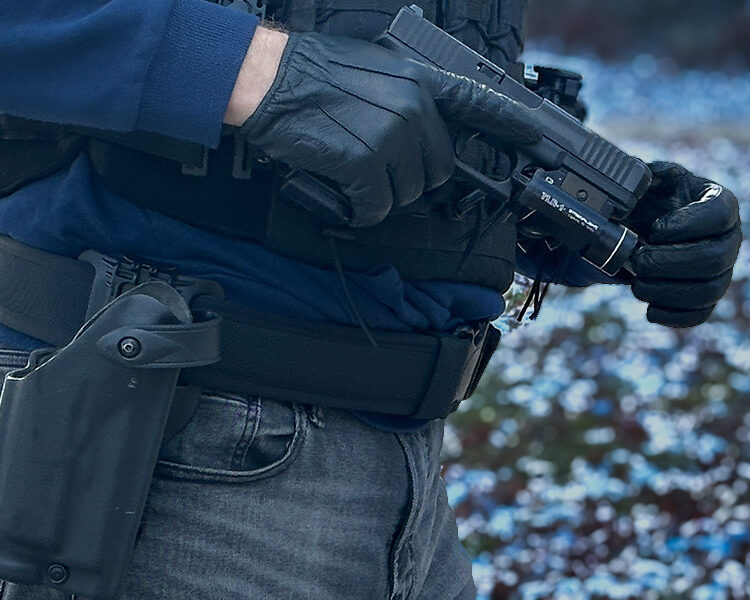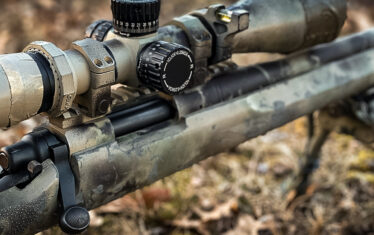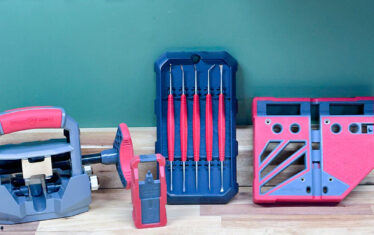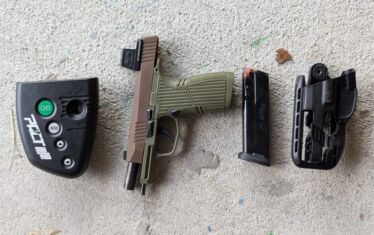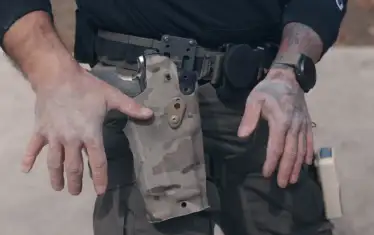Are you looking for a duty/combat-style holster? There are a lot of good options to choose from and some of those choices include belt attachments, retention level, and more. One thing you may have noticed during your search for a holster is the different heights at which the holster sits compared to the belt. This is most often referred to as the “ride” position.
There are three common heights for the ride position: Low, Mid, and High. These ride positions do not apply to a drop-leg/thigh holster as it doesn’t attach directly to the belt.
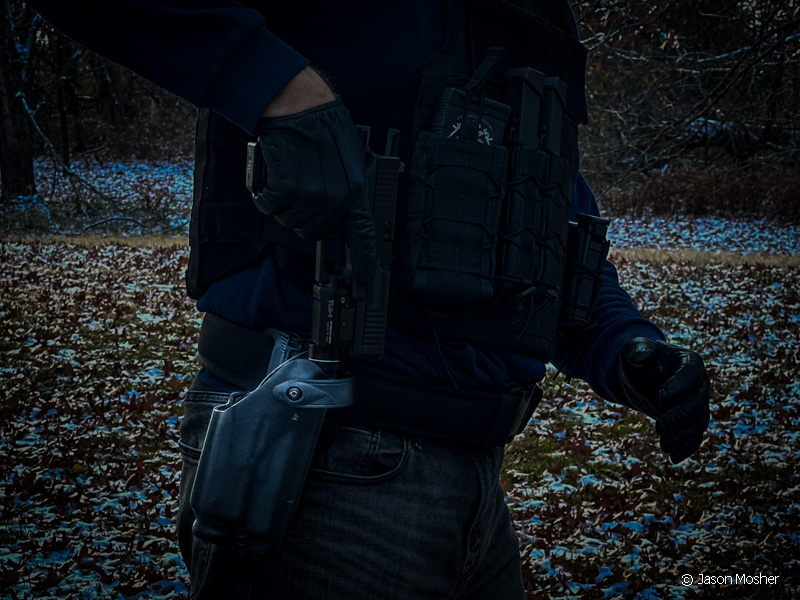
Deciding what option to go with is not an easy decision to make. Like everything else in the gun and gun accessory world, manufacturers have ensured we have lots of options. These options are good because they allow us to get exactly what we want, or closer to it at least. But sometimes it’s hard to know what you need. Is there really a big difference between the low and high-ride holsters?
There is a reason for how high or low a holster sits from your waistline, and figuring out which one you need depends on multiple things. We will cover the three common holster ride options and talk about why and when you may need a specific one. This applies not just to members of law enforcement, but to anyone wearing this style of holster. Also, just to be clear, these ride positions do not apply to a drop-leg/thigh holster as it doesn’t attach directly to the belt.
If you’re not sure what ride height to go with, don’t worry. I’m also going to talk about a cool belt attachment from Safariland that allows you to adjust your holster from low-ride to high-ride in seconds.
Low-ride holsters
Low-ride holsters are probably the least used for everyday duty, combat, or hunting. With this style, or “ride” of holster, the butt of the gun rides 1.5 inches lower than a mid-ride holster. SWAT and tactical teams choose low-ride holsters when not wearing thigh holsters because they clear their body armor. When you wear a heavy outer carrier vest, you most likely have all kinds of attachments on it. These attachments can interfere with the gun, making it hard to draw if the gun rides too high.

A low-ride holster keeps the butt of the gun low enough to draw without hitting equipment attached to the vest. Another benefit for tactical teams is the low-ride holster places the gun closer to their hand, making it quicker to draw. But a low-ride holster also has some drawbacks too. When you’re sitting in the car or a chair, a low-ride holster is not comfortable at all. The holster will push up on your belt and in some cases, make it hard to even sit up straight in a seat. Some people may like low-ride holsters for everyday use, but it’s more of a special task holster position.
Mid-ride holsters
The mid-ride holster is by far the most common. It places the butt of the gun in between that low and high ride area, making it ideal for everyday use. This is more comfortable than a low-ride holster, and is easy to draw from. I’m going on two decades in law enforcement and I’ve always used a mid-ride holster for regular duty. I know of some cops who prefer a low or high-ride holster, but this is not the norm. While there are pros and cons to both low and high, a mid-ride holster provides the best of both worlds. At least for everyday carry, that is.
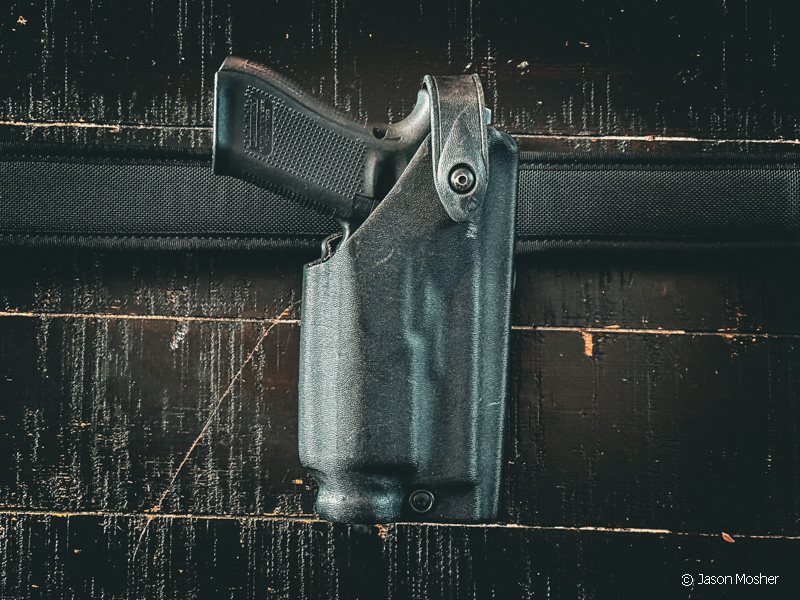
A person’s arm length, torso length, weight, and a slew of other factors can change what ride of holster someone wants. But in general, a mid-ride works best for sitting, standing, and holding the gun at a good place for drawing. Unless someone knows exactly what they want, I recommend they choose a mid-ride holster when selecting a duty/combat style holster on a belt system.
High-ride holsters
And that leaves us with high-ride holsters. I’ve worn high-ride holsters a few times and they have some benefits, but they also have some downsides. Again, it depends on each person and what they are doing with a holster. If your job requires you to sit at a desk or in a car for hours at a time, this is a perfect option. This style of holster places the butt of the gun about 1.5 inches above the mid-ride option, depending on the manufacturer. One to two inches may not sound like a lot, but it is on a holster.
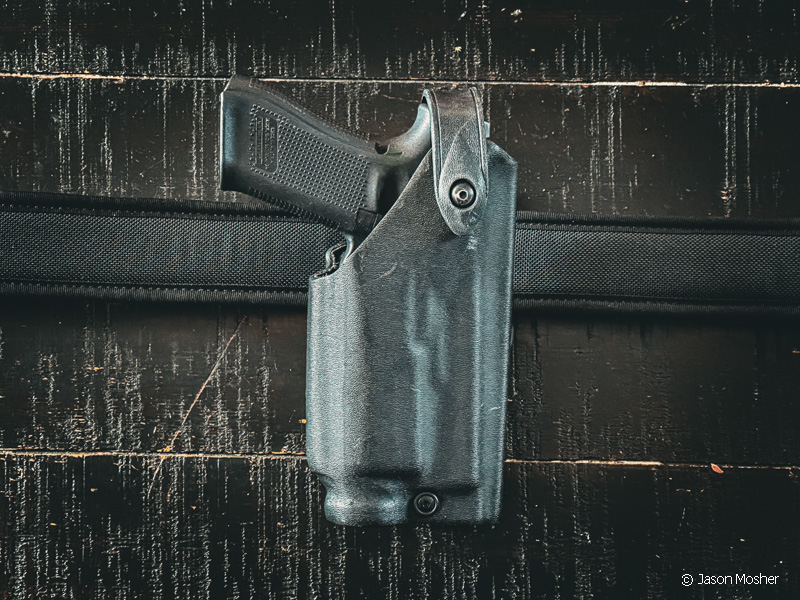
You can sit comfortably in a car with a high-ride holster and even draw it better from a sitting position. But there are some downsides to this as well. If you wear some type of vest or plate carrier, a high-ride holster really gets in the way. Depending on what someone has on their vest, it could even make the gun impossible to draw. For me, drawing a gun from a high-ride holster is not as comfortable because I have longer arms.
Vertical Universal Belt Loop (VUBL)
So, what if you want a holster that is comfortable in a car but also works with a vest? Go with a Safariland holster. More specifically, go with a Safariland holster and a VUBL (vertical universal belt loop) attachment. This attachment is adjustable for three positions (guess which ones) and only takes a few seconds to adjust. You can move it to a high-ride position if you’re going to be sitting for a while or drop it to low-ride for tactical purposes.
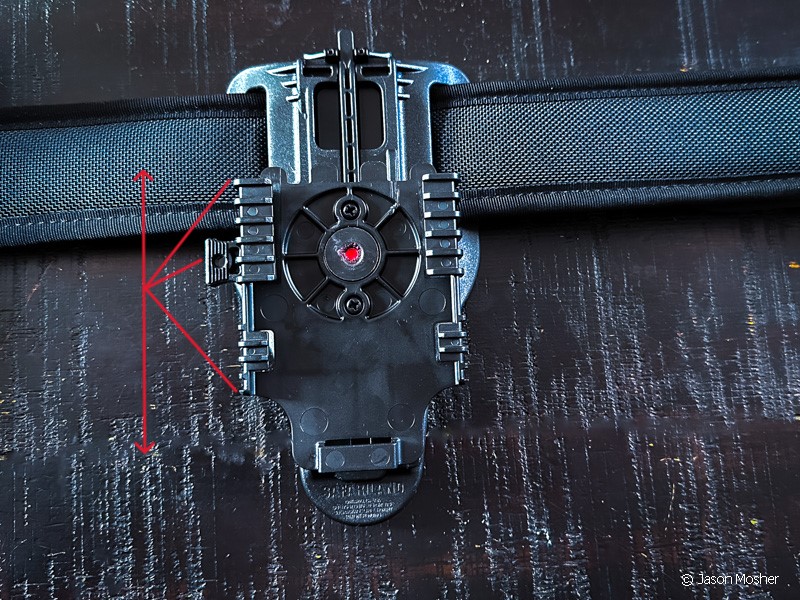
And since we’re talking about Safariland attachments, I must mention the QLS (quick locking system) for their holsters. The QLS system makes it easy to remove the holster from the belt without taking the belt attachment off. It basically splits the holster into two pieces. This means you can mount the QLS system on other holsters and use them on the VUBL. I have one duty belt, one combat belt, and one drop-leg/thigh system. Any of my Safariland holsters will fit on any belt because of the QLS.
One fix for everyone
Unless you know exactly what you want and don’t plan to change anything, I would buy the VUBL and QLS systems. If your Safariland holster is compatible with the standard 3-hole pattern, it will work. Buy any holster, attach the QLS receiver plate to the belt attachment and the holster fork to the holster. The holster fork then slides into the receiving plate and locks in place. It’s one fix for all your holster needs and it works great.
I have the QLS system on all my holsters and the VUBL system on my duty belt. How you want to wear your holster is completely up to you. Find what works and go with it, but make sure you buy a quality holster when you do.





